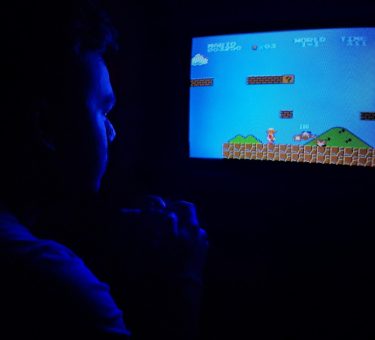The first time I ever sat in a luxury sports car, I was about 11 years old. It belonged to my friend’s dad who was part of a car club. A couple of times a year, the club would rent out a racetrack and drive their sports cars at ridiculous speeds. My dad arranged for me to be a passenger with his friend, so I slid into the luxurious leather seat, buckled on a helmet, and off we went.
Going 150 miles an hour around the racetrack was nothing short of exhilarating (especially at that age). When we pulled off the track, I remember gingerly climbing out of my seat and admiring the car’s interior. Every little detail of that car worked together to create an experience that was both powerful and refined.
A recent conversation with a prospective client unearthed this memory, as it drove home the point that the person who designs the engine for a Ferrari is not the person who designs the seat.
The prospect works with a company that makes security cameras for apartment complexes. They have about 2,000 customers and more than 15,000 cameras deployed. Sometimes the cameras will get gummed up: a battery goes out, a tree blocks the view, a bird chooses to build their nest in the exact wrong spot. They came to Tandem in need of a machine learning system to help notify their customers when cameras are ineffective because of an obstruction.
However, Tandem does not have strong expertise in creating a machine-learning algorithm component — and we aren’t afraid to admit that.
You don’t just buy a Ferrari for the engine. A sleek, optimized engine is awesome, but if driving the car felt like driving a school bus, nobody would pay the price point. Instead of bluffing our way through the security camera project, we’d rather bring in a collaborator who does have machine-learning expertise so we can focus our efforts on what we do best: user interface. Our talented product designers and software engineers can build a UI so an administrator can actually benefit from the algorithms.
Giving a security guard a command line and hoping they understand it? Not ideal. With 15,000 cameras deployed, there has to be a way for people to easily interact with the hardware. Let’s make an intuitive system that shows a map of what cameras are down. Let’s automate a text message to be sent to a maintenance person to check it out when the program senses an obstructed camera. Just like you can’t have a Ferrari engine without a seat for the driver, you can’t have hardware without well-designed software, or else you’ll never reach full potential.
Who is alerted when a camera is defective, the way they’re alerted, and how they interact with the system thread together to make up the leatherwork of the Ferrari seat we’re designing. We want to help our clients accomplish tasks with fewer clicks, faster load times, and less frustration in the process. What makes a Ferrari a Ferrari is understanding its engineering pieces and then tailoring the car to create a luxury, human experience.
It was a similar case when working with Tollos. We don’t have hardware design capabilities internally, so we brought in a collaborator who created circuit diagrams for a printed circuit board that would go inside the equipment we were building an interface for. Along with hardware, there was connecting web software and software that had to be embedded in the circuit board. Our consultant designed the engine while we designed the seat, which resulted in human interaction with the application being as intuitive and painless as possible.
We excel in collaborating and doing the upfront research to build applications that help computers work better and make people’s lives easier. No one company or team needs to do everything. It’s great if you can find that, but directing people to the expertise they need is just as beneficial. Sometimes you need more than one kind of expert for a product to be the best it can be. Smart teams of empathetic people can work together collaboratively on something and get it delivered. How do I know that? Because I’ve witnessed it firsthand at Tandem.
With a Ferrari, there’s someone who designs the engine and somebody else who designs the seat of the car (and somebody else who designs the sound system, and somebody else who engineers the tires…). The skillsets of those people are not the same! In some cases, we build the “Ferrari” from the ground up because we have the expertise, but if we have to say no to a prospective client, we still do our best to provide value to them.
There’s immeasurable strength in specializing and collaborating well with experts in different fields. Sharing knowledge is imperative: the engine won’t fit in the car body unless those two designers communicate. If you have a complex project that requires multiple levels of expertise, let’s have a chat. Together, we’ll find the right people to get you into top gear.









